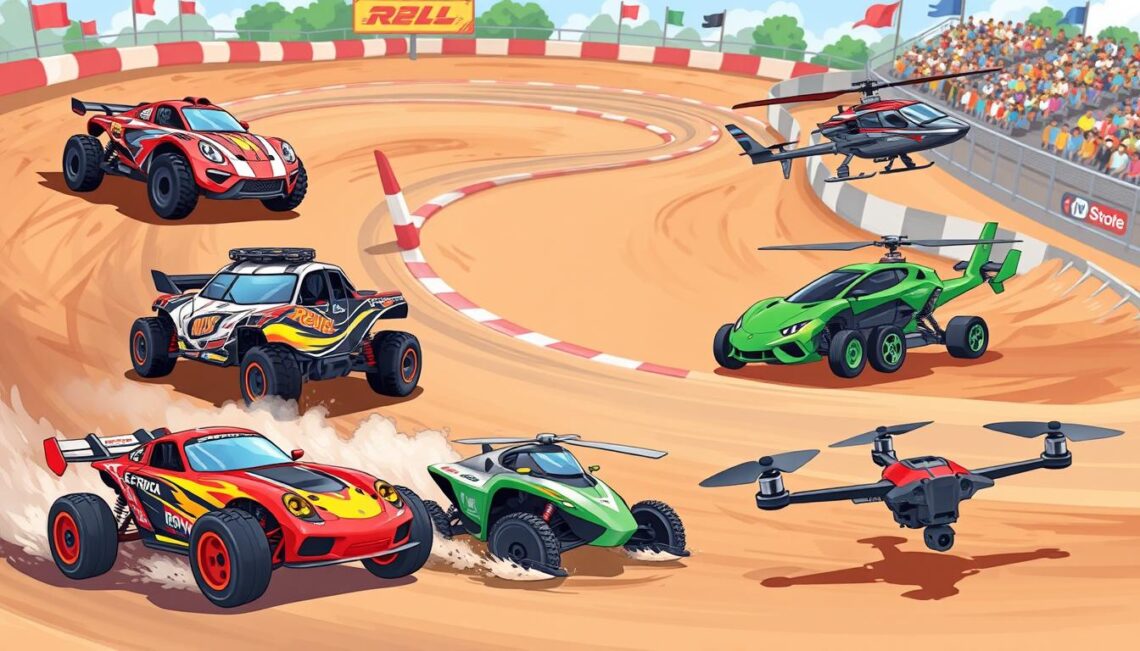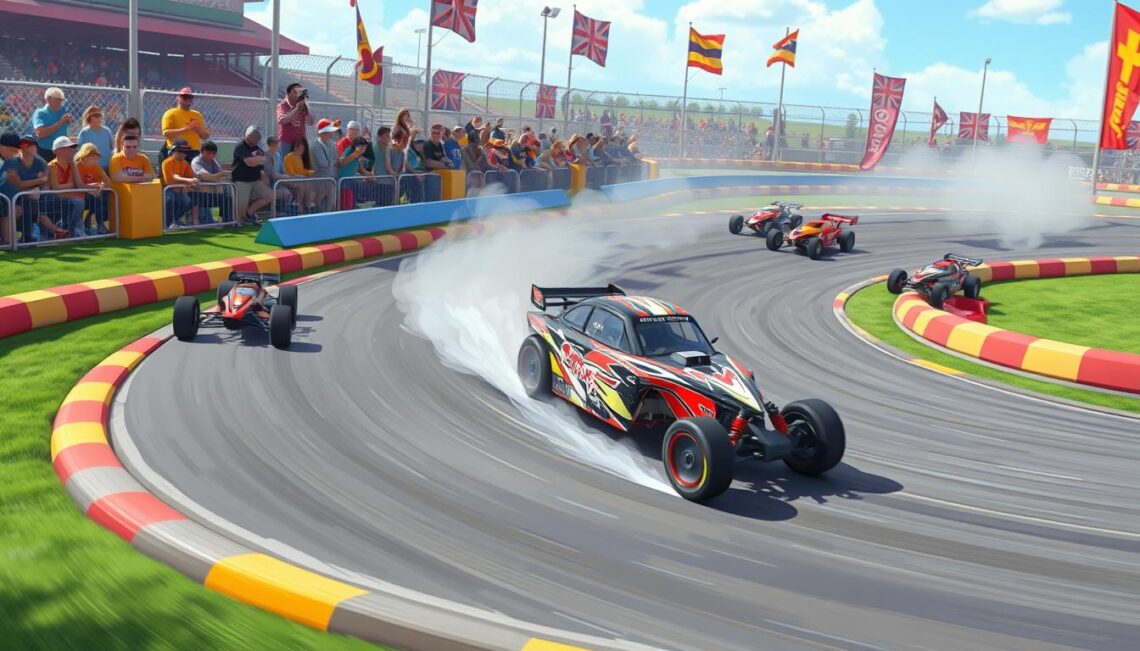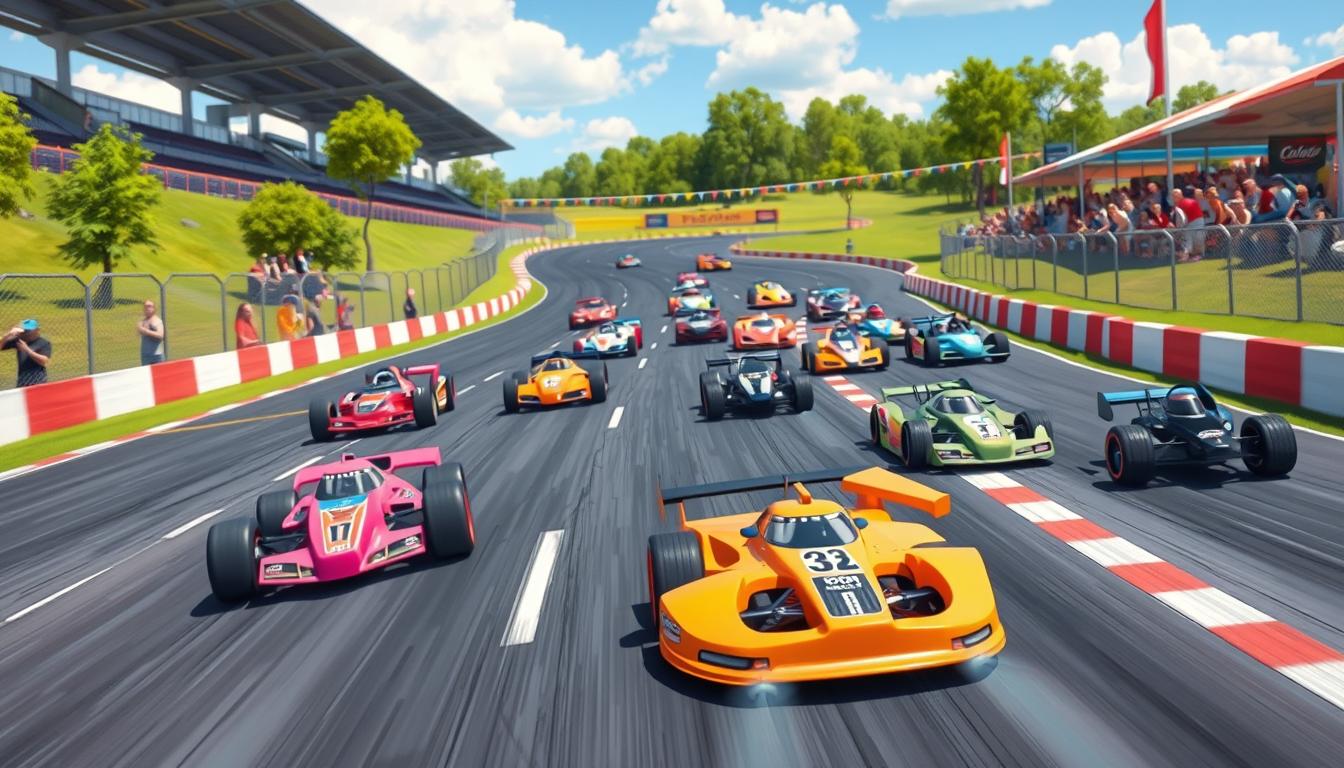In the high-octane world of RC racing, understanding effective RC racing strategies is pivotal for any racer aiming to dominate RC tracks. Competitive RC racing isn’t just about speed; it’s a multifaceted sport that demands keen insight into numerous elements, from technical setups to mental preparedness. By familiarizing yourself with essential racing concepts and honing your skills, you’re setting the foundation for success on the track. This section will delve into the core principles of winning RC techniques, emphasizing that thoughtful practice and strategic planning can significantly elevate your racing performance.
Understanding the Basics of RC Racing
RC racing is a thrilling hobby that captivates enthusiasts of all ages. Whether one is just starting or refining their skills, understanding the foundational aspects of RC racing is essential. This segment covers RC vehicle types, key performance components, and important track features for RC racing.
Types of RC Vehicles
RC vehicle types can be categorized into various categories, each designed for specific racing conditions:
- On-Road Vehicles: Built for speed and smooth handling on paved surfaces.
- Off-Road Vehicles: Designed to navigate rough terrain, ideal for uneven track surfaces.
- Electric Vehicles: User-friendly, known for easier maintenance and quieter operation.
- Nitro Vehicles: Powered by a fuel mixture, offering a more authentic racing experience with higher top speeds.
Brands like Traxxas, Associated Electrics, and Tamiya dominate the market, delivering reliable performance and innovative designs for each type of vehicle.
Key Components for Success
Understanding essential RC racing components enhances a vehicle’s performance and capability. Key components include:
- Motors: Determines speed and acceleration rates.
- Batteries: Affects run times and overall power.
- Chassis: Provides support and stability during races.
- Tires: Influences grip and handling based on track conditions.
Choosing quality components tailored to specific vehicle types greatly enhances racing success.
Essential Track Features
Track features for RC racing play a critical role in the racing experience. Consider these aspects when selecting or designing a track:
- Surface Material: Options may include asphalt, dirt, or carpet, each providing distinct racing characteristics.
- Layout Design: Tight turns and long straights can affect different vehicle types’ performance.
- Bumps and Obstacles: Adds challenges and excitement, testing drivers’ skills.
Ultimately, evaluating these track features will enhance the overall enjoyment and competitiveness of RC racing.

Winning Strategies for Competitive RC Racing
As you delve deeper into the world of RC racing, mastering advanced race techniques can set you apart from the competition. Understanding that speed alone doesn’t guarantee victory is essential. Effective RC racing strategies incorporate precision, timing, and continual improvement. Team dynamics in RC racing play a crucial role in a successful performance, especially in team events where coordination and communication are vital.
Mastering Racing Techniques
To improve on the track, focus on critical racing techniques such as cornering, braking, and acceleration. Each of these elements directly influences overall lap times and can determine your standing in a competitive race. Practice sessions can be structured around:
- Cornering precision: Develop a smooth approach for entering and exiting corners to maintain momentum.
- Braking techniques: Understand how to brake effectively while reducing speed without losing control.
- Acceleration management: Learn when to apply full throttle and when to modulate to enhance traction.
Importance of Strategy Over Speed
While speed is a common focus for many racers, integrating effective race day strategies can yield better results. Analyzing track conditions, competitors, and the vehicle’s performance can help craft a personalized approach that might not rely solely on being the fastest. Some strategies include:
- Positioning: Identify where to position on the track to take optimal lines.
- Timing: Determine the best instances to make tactical moves, including overtaking other racers.
- Resource management: Allocate battery life and tire wear effectively for consistent performance throughout the race.
Utilizing Team Dynamics
In a team racing format, the dynamics of communication and collaboration can significantly impact results. Establishing clear roles within the team can enhance performance. Consider these aspects of team dynamics in RC racing:
- Effective communication: Ensure all team members understand their responsibilities and the race strategy at hand.
- Practice together: Engage in joint training sessions to build rapport and synchronize driving styles.
- Feedback loops: Encourage team feedback, allowing members to share insights on performance improvements.

| Race Techniques | Benefits | Practice Tips |
|---|---|---|
| Cornering | Increased speed through curves | Use cones to mark ideal paths |
| Braking | Improved control and stability | Practice stopping at designated points |
| Acceleration | Better traction and faster lap times | Experiment with throttle control on various surfaces |
Preparing for Race Day
Race day preparation is crucial for achieving peak performance in RC racing. A well-structured pre-race checklist can make all the difference. Ensure that your vehicle undergoes thorough inspections, checking battery levels, tire conditions, and electronics functionality. Additionally, fine-tune the setup of your vehicle according to track conditions, and review your racing strategy with your team to address any adjustments that may be necessary.
Mental preparedness is just as important as technical readiness in RC racing. Incorporate visualization techniques into your routine, imagining your lines around the track and the moves you’ll make to gain an advantage. Relaxation exercises can also help alleviate any pre-race jitters, ensuring that you remain focused and composed when the green light turns on. Keeping your mind clear can enhance your decision-making skills during the race.
Flexibility can often be the key to success. Race conditions can change quickly, so it’s vital to develop a flexible plan that allows you to adapt your strategy as needed. Whether it’s dealing with unexpected weather changes or competitors’ tactics, being prepared to pivot can set you apart on the track. By carefully planning and preparing for race day, you’ll not only improve your chances of success but also enhance your overall racing experience.

